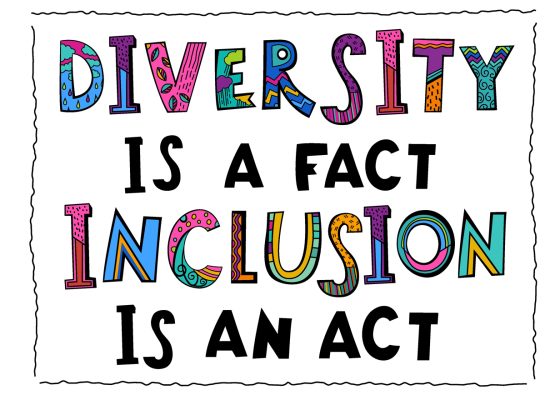While the strategy has been widely welcomed, experts say there is still more that needs to be done to support people on the spectrum – especially children.
Experts and peak bodies have widely welcomed the federal government’s launch today of Australia’s first National Autism Strategy, but some have used the opportunity to call for urgent action to support children on the spectrum.
Autism Awareness Australia chief executive Nicole Rogerson said children on the spectrum were losing access to NDIS funding as a result of reforms to the scheme announced last year by outgoing NDIS minister Bill Shorten.
These children will instead be required to apply for access to early intervention and support through new state-based foundational support programs.
Ms Rogerson said state governments were not ready to support the “approximately 600 autistic children who were having their NDIS packages removed every week”.
“There needs to be a streamlined approach to address the funding gaps between the Commonwealth and state governments, because the current changes to the NDIS are having a real impact on Australian children,” she said.
“The unintended consequence of removing Commonwealth support before the states are ready is a generation of autistic kids who don’t get the help they need.”
Ms Rogerson said additional resources and training for primary and secondary school teachers were vital, so they were equipped to support children with autism in the classroom.
“Public schools admit they are not ready to support these kids as they come off their NDIS packages, and both teachers and parents are nervous about these changes having a negative impact on their education,” Ms Rogerson said.
“While the strategy’s extensive list of commitments is a great start, until they are implemented these kids are missing out on the vital support they need. We need action now to fill the gaps.”
Ms Rogerson acknowledged this was a complex issue but stressed the importance of continued government support.
“The NDIS might not be the home for all children with autism but until we have alternative supports in place, we can’t remove this funding,” she said.
“We know that a good education sets children up for life – we cannot fail our autistic kids because of a policy flaw.”
The National Autism Strategy and associated Action Plan are designed to improve inclusion, support and life outcomes for all Autistic Australians.
The strategy was developed with the guidance of the National Autism Strategy Oversight Council and involved extensive consultation with autistic people, their families and carers, and the broader autism and disability sectors, researchers and experts.
The strategy and action plan focus on four key outcome areas:
- Social inclusion;
- Economic inclusion;
- Diagnosis, services and supports;
- Health and mental health.
Federal social services minister Amanda Rishworth said the strategy reflected the government’s commitment to improving the lives of the almost 300,000 autistic people living in Australia.
“Addressing the barriers autistic people face in areas like education, employment and diagnosis is long overdue and we are proud to deliver a Strategy that will change lives for the better,” she said.
“This is not a strategy that has been done in isolation. It has been built in consultation and collaboration with autistic people living in Australia.
“Working with autistic people will remain key as we work to implement the goals of the strategy and the associated action plan – ensuring we meet the diverse needs of Autistic people in Australia.”
Clinical psychologist, Professor Adam Guastella, Michael Crouch Chair in Child and Youth Mental Health at the University of Sydney Brain and Mind Centre’s Clinic for Autism and Neurodevelopment Research, told Health Services Daily the number of Australians with autism was probably much higher than 300,000.
“Where there are good surveillance systems – like what’s in the [United] States and other countries where there are good surveillance systems – one in 36 is the accepted figure and we’re not that different here,” he said.
Professor Guastella welcomed the strategy, but said it would not solve issues overnight.
“It’s a positive step in developing a National Autism Strategy and having it as a priority, but it’s important to recognise there’s far more to do,” he said.
“There will be a lot of people disappointed [by the strategy] because it doesn’t provide all the solutions. And that’s partly because it’s really complex area [and] there are no simple solutions. But it’s a starting point.”
He shared Ms Rogerson’s concerns about children being moved off the NDIS before foundational support systems were properly established and developed to meet the specific needs of children on the autism spectrum.
“These supports needs to be put in place as a matter of urgency,” he told HSD.
The action plan is backed by $42.3 million in funding and outlines the practical steps the Albanese Labor Government will take to achieve the vision and outcomes of the Strategy over the next two years, including:
- $19.9 million over four years for a peer support program to provide lived-experience knowledge, empathy and culturally tailored advice;
- Enhancing community understanding, awareness and acceptance of autism through $915,000 over two years for new awareness and education initiatives;
- Improving the diagnosis process through $445,000 in 2025-26 for resources to support autistic people and their families;
- Boosting pathways to meaningful employment through $915,000 over two years to improve employment opportunities;
- $12.2 million over five years for a dedicated knowledge translation body, which will ensure academic research into neurodiversity informs and improves the policies and services impacting autistic people;
- $3.7 million over two years to work with autistic people and the autism community to evaluate existing programs aiming to improve their lives, to identify what works, where there are gaps and opportunities for improvement;
- Identifying ways to improve Australian Government services, supports, information and the safety and welfare of autistic people; and
- $2.8 million over four years for a comprehensive epidemiological study to identify the true prevalence of autism in Australia, which will underpin future policy development.
Professor Nicole Rinehart, Monash University School of Psychological Sciences professor and founder of the AllPlay program for children living with disabilities, described the strategy as an historic development.
“In my 25 years as a clinical psychologist working with autistic children and their families, as well as in autism research, I have never seen a moment in Australian history where there has been bipartisan agreement to commit substantial funding to improve the lives of autistic children and their families. This marks an extraordinary leap forward,” she said.
“However, we must tread carefully.
“With the NDIS Review 2024 and the Autism Strategy 2025 both on the table – each containing critical recommendations that shift our focus back to the needs of children and families, moving away from outdated, deficit-based models of ‘fixing’ autism – I am concerned that if we do not work collaboratively across the clinical, research and community sectors, we could lose the opportunity to make meaningful, world-leading progress for the autism community.
“What we do not want to see here is the ‘reinvention of the wheel’ and ‘shiny new ideas’ that do not join the landscape for the autistic community and we lose momentum and precious funding.”
The National Autism Strategy, its First Action Plan and supporting materials including accessible versions are available here.



